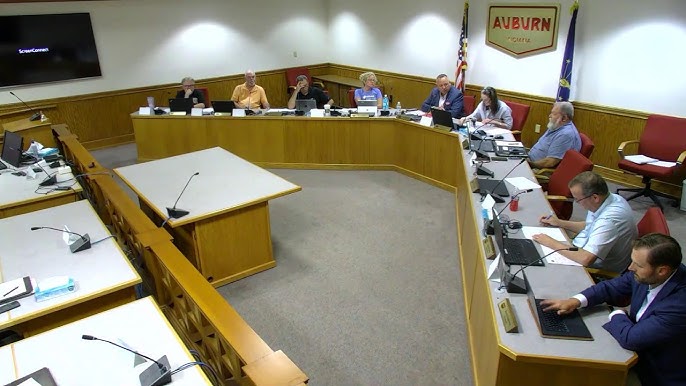Latest News
Full Ride to College: Angola Student Named 2026 Lilly Scholar
(ANGOLA) - A Steuben County student is getting a full ride to college through one of Indiana's most prestigious scholarships. The Steuben County Community Foundation has announced Daniel Koch of Angola High School as the county's 2026 Lilly Endowment Community Scholar. Koch was selected for his a...
Read MoreHelp Downtown Shine: Angola Main Street Looks for Volunteers
(ANGOLA) - Angola Main Street is putting out the call for volunteers as it plans ahead for 2026. Organization leaders say volunteers truly are the heartbeat of downtown Angola. Throughout 2025, dozens of community members donated their time -- helping set up events, greet visitors, support local ...
Read MoreGrabill Pond Rescue Turns Fatal
(GRABILL) - An elderly woman has died following a water rescue Wednesday morning in Grabill. The Allen County Sheriff's Department says crews were called just before 7 a.m. to a frozen pond along Grabill Road after reports of a car in the water. Investigators say the woman was driving north on Ro...
Read MoreIN Gov Braun Reflects on Year One: Policy Wins, Political Setback
(INDIANPOLIS) - Indiana Governor Mike Braun is closing in on his first year in office -- highlighting major policy changes while brushing off a high-profile political loss. In an interview with the Indiana Capital Chronicle, Braun pointed to property tax reform as a signature achievement. He say...
Read MoreColdwater and Quincy Welcome New Police Officers
(COLDWATER & QUINCY) - Two local police departments are welcoming new officers to their ranks this week. In Coldwater, Tre Miller was sworn in Wednesday morning at City Hall. Miller is a lifelong Branch County resident and a 2024 Coldwater High School graduate. He studied criminal justice thr...
Read MoreMichigan Tax Foreclosure Battle Heads to U.S. Supreme Court
(WASHINGTON, D.C.) - A Michigan tax foreclosure case out of Isabella County is headed to the U.S. Supreme Court -- and the outcome could change how governments across the country handle seized homes. The case involves a home once owned by the estate of Timothy Scott Pung. County officials say the...
Read MoreBakery with Fremont Facility Faces Federal Safety Penalties
(NORWALK) - New Horizons Baking Company, which operates a facility locally in Fremont, Indiana, is facing nearly $395,000 in proposed federal workplace safety fines tied to its operations in Ohio. The Occupational Safety and Health Administration says the Ohio-based commercial bakery was cited fo...
Read MoreSuspect Charged in Mobile Home Fire and Truck Theft
(COLDWATER) - Charges have been filed against a Bronson man in connection with a mobile home fire and a stolen vehicle in Branch County.Court records show 21-year-old Dallas Gump is facing multiple felony charges, including second-degree arson, second-degree home invasion, and unlawful driving aw...
Read MoreNew Partnership Aims to Strengthen Consumer Protections in Indiana
(INDIANPOLIS) - A new partnership is being formed to help protect Hoosiers from debt and financial hardship. The Indiana Community Action Poverty Institute has announced a partnership with Glick Philanthropies, which is awarding more than $2.5 million in grants to nonprofit organizations across t...
Read MoreAuburn Council Wraps Up Year with Land Purchase and Key Votes
(AUBURN) - The Auburn Common Council closed out its final meeting of 2025 by approving several measures focused on growth, infrastructure, and long-term planning. Council members unanimously approved the purchase of nearly three acres on the city's south side for approximately $128,000. City lead...
Read More










